Revealed: How to research like an A-list copywriter
Most copywriters research by Googling and reading reviews on Amazon. According to Sean Macintyre, this is true even for some of the best-paid copywriters.
But that's fundamentally a flawed process.
Sure, you can find great voice of the customer data, but that's just one piece of the puzzle. If you struggle with research, let me show you how one of the best copywriters in the world does research (and creates proof out of thin air).
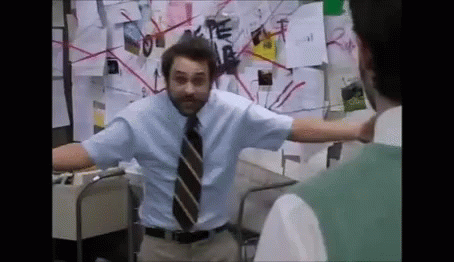
But first: context, facts, and other important details about Sean Macintyre
What I'm about to share is based on Sean's background and the niche (financial) he is writing in. This context is important, but that doesn't mean his process doesn't work in other niches.
Here's the context:
- Sean has been writing since 2001 and has two master's degrees
- He taught in college for about seven years while also ghostwriting books for business professors.
- Landed a job at Agora in 2015, initially as a proofreader and editor until Mark Ford (also known under his pen name Michael Masterson) asked Sean to be the head of his division within the company.
- He was mentored by Joe Schrieffer, Evaldo Albuquerque, Addison Wiggin, Mark Ford, and David Deutsch.
- In 2019, he had his first million-dollar launch, and he hasn't stopped ever since then.
I can say a lot more about Sean, but this is enough to create the right premise. Sean is a brilliant, hard-working guy who has learned from some of the brightest minds in the copywriting industry.
He is the best copywriter I know, so you should pay close attention to what he reveals below.
You can subscribe to my newsletter and receive this and similar advice daily in your inbox.
Below are five questions I asked Sean, and I promise his answers are nothing short of amazing.
What is one skill (or process) that sets you apart from everyone else in your field?
Just like other great copywriters, Sean's success is not due to his writing (alone). Instead, he singles out his primary source research as the foundation of his success.
Here's what Sean said.
"This one is easy: Primary source research. The vast majority of copywriters, even some of the highest paid ones, do little more than a Google search to get their research. Some will get indirect voice-of-customer data using product reviews or forum posts. But very few copywriters actually know how to create their own proof. In financial copy, for example, because I know how to do financial modeling, I can actually create proof points that do not exist anywhere else. And I can legally back up my claims because... I know how to create a basic-ass spreadsheet and do 9th grade math."
Let me quote the highlighted section again: "But very few copywriters actually know how to create their own proof." That's what primary source research is/does. It adds unique and novel information (often) in the form of proof in your research.
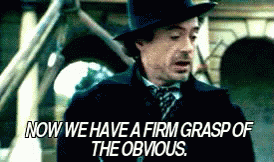
Whatever industry you write copy in, you most likely struggle to develop novel ideas. There's a reasonable explanation: you're Googling (and finding) the same insights every other copywriter writing in the same niche finds, too.
This leads to the following problems:
- Most of what you write feels like regurgitated copy from competitors and lacks authentic proof.
- You have to research two, three, and five times more to discover something remotely novel.
- You can't come up with a new idea.
In other words, your research leads to nowhere new, which is why your copy tends to bomb. Writing copy is a meritocratic job, so when your copy doesn't work, you're let go, and your income plummets.
You can subscribe to my newsletter and receive this and similar advice daily in your inbox.
Why is this skill (or process) important, and what has it allowed you to achieve?
Here's what Sean has achieved thanks to his primary source research method.
"... it's allowed me to achieve a really rare role... Not only am I a reputable editor and content creator, I also make money as a marketing consultant, CRO, and business developer. I earn more money than I ever imagined I could make, doing things I love doing. Really, just having a variety of projects and things to grip my attention is important to me. So cultivating abilities that transition across different verticals has been hugely beneficial."
Anyone with a bit of experience will appreciate Sean's response here. You see, earning an income as a copywriter is not impossible. It may be hard(er) for some, but still possible.
But working on projects that excite you while making a name for yourself (and making more money than you thought was possible) is way harder. This reminds me of something Confucius said: "Choose a job you love, and you will never have to work a day in your life."
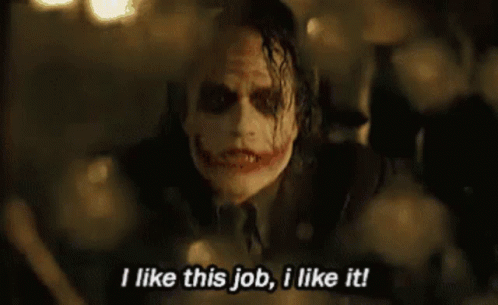
By now, you must be wondering how primary source research works. That's what the next question will reveal.
How does this skill (or process) work, and how can others replicate it successfully?
Before you read Sean's response, remember that he is writing the financial niche, so his insight is based on that. But if you stick with me until the end of the article, I'll give you a few ideas on using primary source research across every industry you can think of.
Here's Sean's process.
"Good primary source research requires the ability to ask just two questions... one tactical and one meta question. The tactical question is: What do I need to show to make my idea believable?
I'll give a specific example from something I'm working on right now: I'm writing a column basically arguing that market dips are good buying opportunities. I could show the same-same proof that the market tends to go up over time.
But I thought that was lamer than a one-legged man in an ass-kicking contest. No, I wanted proof that big market dips were indisputably a good time to buy, a signal all on their own.
So I downloaded 75 years of S&P 500 price data and just added up the number of times the market dipped. Then I added up the number of times the market spiked within one month of a dip happening. Then I compared it to the number of times the market continued to crash within a month of a big dip.
Wouldn't you know it? The S&P 500 has a history of +2% spikes within a month of a -2% dip. More than that: Spikes following dips was statistically more likely than seeing more dips!
There's my proof. Historical data that makes the idea "you should buy when the market dips" more believable. Combine that with other second-hand information like the fact that, if you miss the best days in the market you get sub-par returns, and you have great proof of the idea."

Let's unpack this.
Before going down the primary source research path, you should have an idea. That idea should guide you in the right direction. That's when asking, "What do I need to show to make my idea believable?" makes perfect sense.
Without a (big) idea, you'll end up researching endlessly.
Now, remember when I told you earlier that primary source research adds novel information and proof?
Here's how.
"The meta question is related to the example I just gave... you have to ask yourself: What have people never seen or thought about before? To even come close to beginning to answer this, you have to be such a massive consumer of information and content and copy that your target demographic is likely to see or have seen. It takes a different kind of thinking, I think. I'm reminded of the negative space concepts presented in Godel, Escher, Bach. Or Magritte's paintings. You have to recognize patterns in what's absent rather than what's present in order to derive meaning. Some people just aren't capable of doing that. Then again, some people aren't capable of being decent writers, researchers, or marketers. So... there you go."
This is true and yet you won't hear anyone else teaching research like this. I have bought some of the most expensive programs about copywriting research, and none ever emphasize the importance of figuring out what's missing.
I saw this same idea mentioned in one book, and it wasn't a marketing or copywriting book. The author of Essentialism Greg McKeown, references an example involving journalist Charlie Simms, who gave his students a writing assignment.
The task involved writing a good lead for an article.
The topic was the following:
"Kenneth I. Peters, the principal of the Beverly Hills High School, announced today that the entire high school faculty will travel to Sacramento next Thursday for a colloquium in new teaching methods. Among the speakers will be anthropologist Margaret Mead. college president Dr. Robert Maynard Hutchins, and California governor Edmund 'Pat' Brown."
Most leads (written by the students) repeated the facts. So most of the leads said stuff like:
- "Margaret Mead, Maynard Hutchins, and Governor Brown will address the faculty on..."
- "Next Thursday, the high school faculty will..."
And yet they all missed the mark. Here's Charlie Simms' lead:
"There will be no school Thursday."
See the difference?
Same facts, completely different idea. All because Charlie Simms focused on what wasn't happening on Thursday.
Here's another example from the same book, this time involving Thomas Friedman, a New York Times columnist and author of multiple books. He said, "Listen for what others do not hear."
In other words, to discover a novel ideal from his resources, he was paying attention to what was not being said. That's what the lead Charlie Simms wrote did: it told what the facts didn't say ("There will be no school Thursday").
Back to Sean's insights now.
You can subscribe to my newsletter and receive this and similar advice daily in your inbox.
Can you provide a concrete example where this skill (or process) made a significant difference?
You've probably been itching for a tangible example of primary source research. Sean obliged with this response.
Here's example numero uno.
"I was working on a promo that involved a stock-picking system that used basic AI to detect potential trades. The guru provided the code and the trades and little else.
So what I did was plug the code into BigML (machine learning that helps decipher predictions based on the code) and actually find out which variables were most responsible for the gains, and I also put it into a python shell (executes the code and shows potential results) and got a lot of cool animated visualizations I was able to use in the VSL that allowed me to prove what was happening "under the hood" of this code."
I know this may sound daunting to you. But all Sean did was consume the product. That's the same as going through the course you're about to write copy for. My suggestion here is to keep it simple and within the boundaries of what you understand/can do.
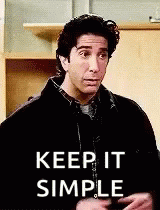
Sean is tech savvy (evidently) and is comfortable playing with different tools to validate his idea.
Here's example numero dos which is simpler.
"I remember one time I was working on copy for an info product about reverse mortgages. The previous promotion selling the product had bombed hard.
But if you read the copy it was easy to understand why--aside from the fact that the framing and packaging was all wrong, it seemed like that copywriter didn't actually understand what reverse mortgages were and what the deeper benefits were.
So what did I do? I called a reverse mortgage company and asked questions! Then I put the report of that conversation into the promotion! People don't think about this stuff. It's why so much sales copy at the lower levels feels so generic and same-same.
But novel proof allows you to make novel claims, and we know that uniqueness sells better than promises or benefits. For now, anyway."
To point the obvious: Sean calling and asking questions is primary source research. It can't be simpler than that.
And I know what you're thinking, "But I write copy for $50 bucks; should I call people too?". No, you shouldn't.
But if you ever get hired to write something big and well paid you should!
"But what if I'm an introvert who doesn't want to talk to anyone and still do primary source research, Robert?"
Well, Sean's covered that situation too!
"But here's another example... a simpler one. I wanted to dimensionalize how small 5G ASIC chips were. So I bought one. And took a picture of it in my hand. Then I used that picture in the promotion.
Now I can show, beyond a shadow of a doubt, that this powerful thing is also a very, very small thing."
Sometimes it's as simple as that.
But Sean has one final piece of advice for you, stranger.
Is there anything else I should have asked that would help others better understand and implement this skill (or process)?
I know the following is 'common sense' but many copywriters don't take it seriously. This is why there's a common copywriting joke in some circles that says "copywriters don't know how to read."
Enough teasing. Here's what Sean said.
"... I want to emphasize how important reading--and reading widely--is for everything I'm talking about. Most copywriters and marketers fall into the same mistake of endlessly reading business, copywriting, and marketing books.
And straight up, you become so much more valuable when you start reading, like, Jung or Lacan and start thinking critically about it comes to bear on what you do professionally.
Pop books about these people or ideas always miss what's important, different, insightful. Really it's the interpretation and synthesis of others' ideas that allow someone to stand out in this field."
So, just read. Be curious about the niche you're writing in and be willing to go wide and deep.
There's no shortcut to becoming an expert.
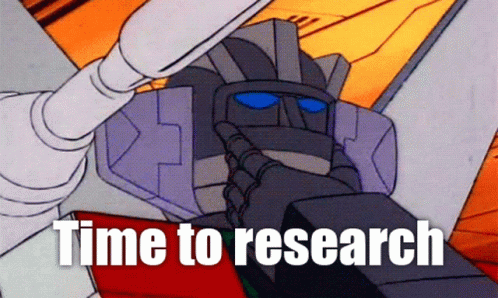
How do you use primary source research in any niche?
Here are five simple things anyone can do to use primary source research:
- Consume whatever you're paid to write copy for and test out (use the process, method etc.) whatever it is teaching
- Interview customers, clients, experts, and thought leaders
- Create polls on social media or with your client's email list
- Buy competitor's product(s) and test it out (similar to step one above)
- Create a comparison table of similar products (to the one you're selling) and share your insights
In other words, add experience(s) to whatever theory you've come up with.
Before we wrap, I also want to share five books Sean recommended copywriters should read.
Sean Macintyre's book suggestion for copywriters
- "Alchemy" by Rory Sutherland
- "Great Leads" by Michael Masterson and John Forde
- "One to Many" by Jason Fladlien
- "Take Their Money" by Kyle Milligan
- "Pitch Anything" by Oren Klaff
You can subscribe to my newsletter and receive this and similar advice daily in your inbox.
Connect with Sean
If you want to connect with Sean, you should check out CopyThat! YouTube channel. It's undoubtedly the best copywriting content on YouTube. If you're interested in writing for the financial niche, you must check Sean's DIYWealth YouTube channel.
Member discussion